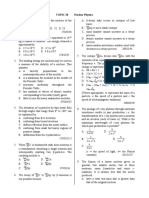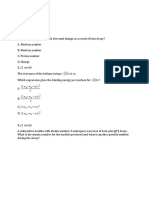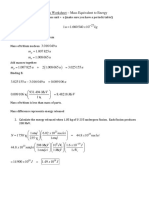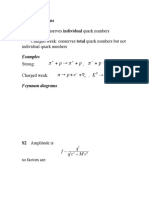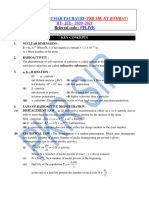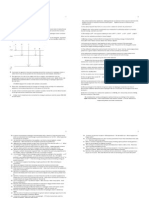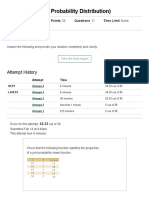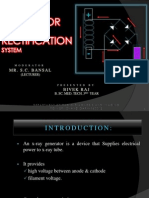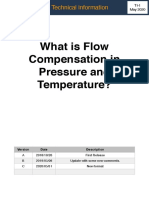M.Sc.
Physics (Semester-III) - 2025
Nuclear and Particle Physics
Tutorial Sheet-2
1. The effective cross-section of a gold nucleus corresponding to the scattering
of mono-energetic alpha particles within angular interval from 90◦ to 180◦
is equal to σ = 0.5kb. Find (i) the energy of alpha particles (ii) the
differential cross-section of scattering at 60◦ .
2. What is the minimum kinetic energy (MeV) of an alpha particle that it
should have to just reach gold nucleus Au(79,197) ? What is the deflection
of the alpha particle when the impact parameter is equal to the distance
of closest approach ?
3. A heated anode produces Li+ isotopes which are accelerated to a potential
difference of 400V. These are further subjected to a uniform magnetic
field perpendicular to their direction of motion of magnetic flux density is
8 × 10−2 W b/m2 . The radii of the paths of the ions are 8.83 and 9.54 cm,
respectively. Calculate the mass numbers of the lithium isotopes.
4. In a Laboratory experiment an accelerated proton beam was incident on
Li(3,7) target placed in a reaction chamber. The reaction products were
detected using particle detectors placed at different angles.
(a) what should be the minimum projectile energy from the accelerator
at which the proton may interact with the target atom as a whole?
(b) what should be the minimum projectile energy from the accelerator
at which the proton may interact with the target nucleus as a whole?
(c) Consider the energy of the proton beam in laboratory as 30 MeV,
estimate the following:
i) Energy of the proton beam available for interaction in Centre of
mass frame.
ii) Coulomb barrier experienced by the incident proton beam, both
in laboratory and Centre of mass frame.
Discuss how the above estimates would change if the incident particle is
either an electron or a neutron instead of a proton beam.
1
�5. (a) Compute the mass defect (in amu and energy unit) of the following
nuclei:
(i) 32 235 63 12
16 S, (ii) 92 U , (iii) 29 Cu, (iv) 6 C.
Given: The masses of the nuclei are : M (32 S) = 31.972 amu,
M (235 U ) = 235.172 amu, M (63 Cu) = 62.9136 amu, M (12 C) =
12 amu.
(b) From the given mass defect of following nuclei, estimate their atomic
masses. (i) Na(11,24) [∆M = -8.418 MeV], (ii) Sm(62,114) [∆M =
-81.964 MeV], (iii) Pu(94,240) [∆M = 50.123 MeV].
(c) The masses of some of the unstable nuclides whose masses can not be
measured directly are estimated through the measurement of Q-value
of nuclear reactions involving unstable nucleus. In experiments the
Q-value is estimated through the kinetic energy measurements of the
reaction products.
Consider the following nuclear reaction whose Q value is measured
to be -22.135 MeV. 11 H + 14 7
7 N → 12 N + 1 H
3
12
Estimate the mass of the unstable 7 N nuclide.
Given masses: M (14 N ) = 14.0003074 amu, M (3 H) = 3.016049 amu,
6. The masses of nuclei Ni(28,64), Cu(29,64), and Zn(30,64) are 63.94813,
63.94994, and 63.94932 amu respectively.
(a) Which of these nuclei are stable?
(b) For the nuclei which can decay by β emission, what are the end point
energies of the β particles and the Q-value of the decay reactions?
7. In nuclear physics, the separation energy is the energy needed to remove
one nucleon either proton (Sp ) or neutron (Sn ) from a nucleus.
(a) Derive an expression ∆S = Sp − Sn for a stable nuclei X(Z,A).
(b) Show that for lighter nuclei (A < 40) the stability line is approximately
A = 2Z and more energy is required to remove neutron from a stable nu-
cleus compared to a proton.
(c) Show that for heavy nuclei (A > 100) the stability line approaches A =
2.5Z and more energy is required to remove a proton from a stable nuclei
compared to a neutron.
(d) Calculate the ∆S for the following (stable) nuclei Ne (10,20), Ar
(18,38), Hg(80,200), Pb(82,208)
2
�8. In an experiment, α particles of 5 MeV energy are emitted from radioactive
decay were bombarded on Boron. The reaction produced a penetrating
radiation which could eject a Nitrogen nuclei from a Nitrogenous com-
pound with a kinetic energy of 1.2 MeV.
(a) Assuming that the penetrating radiation is gamma rays, and knock
out nitrogen like X-rays knock out in compton scattering, estimate the
energy of γ ray if it tranfers maximum possible energy as kinetic energy
of Nitrogen.
(b) Considering that the γ rays were produced with maximum energy,
then on the basis of mass energy equation, estimate the energy of γ rays.
(c) the penetrating radiation, instead of interacting with Nitrogenous com-
pound interacted with paraffin wax and produce proton of 4.7 MeV. Es-
timate the energy of γ rays, considering the compton scattering like situ-
ation.
(d) In the original reaction, if instead of γ rays, we consider a neutral
particle of mass m1 and kinetic energy Ek1 knocking Nitrogen with ki-
netic energy of 1.2 MeV and proton of 4.7 MeV. Considering the elastic
collision, Estimate the mass and kinetic energy of such a particle.
mα = 4.00106 amu , mB511 = 11.00825 amu, mN 15 = 14.999 amu
mN 14 = 14.0042 amu











